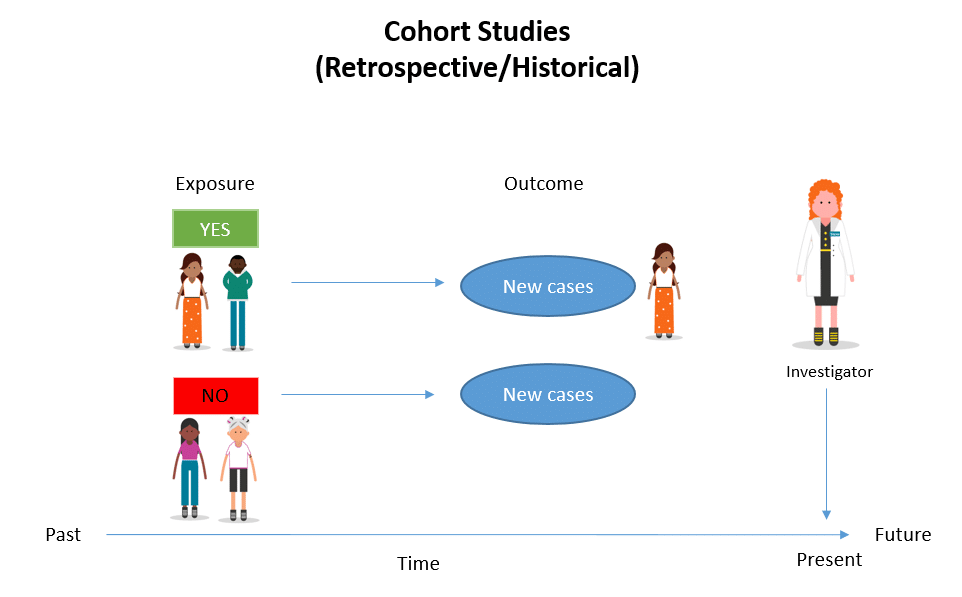A cohort study is very common to get an in-depth analysis of something. It is because it allows the research to collect data on a particular incident properly. By gathering detailed information, researchers can easily determine the absolute risk behind an incident.
This study aims to look at the number of people with similar characteristics who are exposed to various risk factors. By analyzing these factors, researchers can draw proper cause-and-effect relationships.
Because of these reasons, this study is very common in clinical studies and social sciences as it allows to study many aspects of lives in a particular population or society.
This article by experts of a top coursework writing service will give you a complete guide on a cohort study. It will also give you proper information on the types of this study with good examples.
Cohort study:
A cohort study is referred to as a form of a longitudinal study. This method helps to follow the participants of the research for many years. These studies follow and recruit research participants who have common features such as demographic similarities or a particular occupation or field.
This study is a robust method for researching the human population. There are several types of a longitudinal studies. These studies have observed the research participants for many years. People in these studies have some similarities, such as age or location.
There are many ways in which researchers recruit participants. They might be able to contact the participants randomly through the postal address or birth register. When participants join this study, the researcher will collect data from them to get details related to the group or population he wants to study.
The researcher will ask questions to check their traits or demographics, such as race and age. They will also collect information on the following things.
- Biological information
- Social information
- Psychological information
- Medical information
- Environmental information
- Genetic information
This information can help you get a basis for your research. After this, the research will collect data from various points in the participants’ lives. However, this will be known as the follow-up period. This period could be years, months or weeks.
A cohort study is a robust and effective approach to establishing the cause and effect relationship. As this study’s data size is very large, researchers can get meaningful conclusions related to the link between the disease and risk factors.
A cohort study can help you to understand the timelines over which particular behaviour could lead to a certain situation. Nonetheless, there are various challenges that you can face while conducting such studies.
For instance, collecting data from many research participants for many years can be very expensive, time-consuming and complex. Some Participants usually drop out of the study, which can increase the risk of bias. It is also possible that the attitude of some research participants might change when they become aware that they are being observed for a study.
Types of a cohort study:
Prospective study:
In this type of study, you usually try to recruit a group of research participants and observe these people for a long period to collect the data. There are two groups in this study: the un-exposed group and the exposed group. These groups are prospectively followed over a period to track any new disease.
For example, in a prospective study, researchers will compare the 4 groups of men. The two groups will have people with high risks, and the other will have people with low risks. These groups can help you investigate better by analyzing which group is more likely to have PTSD symptoms after an event.
In a prospective cohort study, you will first need to choose a topic you want to study. After this, you will design your study and gather research participants that can help you best study your topic.
For instance, if you want to study the rates of a certain disease at an older age, you will choose a group of people at a younger age with similar traits and characteristics who do not have any heart disease so that you use them as a baseline.
Retrospective study:
A retrospective cohort study usually deals with data that already exists. For a retrospective study, you will properly analyze a group of research participants with similar characteristics. In this study, instead of observing the participants for a long time, you look at the existing data on this person back in time.
This means that you build your study by observing the data in the past to observe and predict a case for the future. For a medical cohort study, you will collect the data on information from past medical records and investigate the outcome of interest.
This study can be very beneficial in tracking any disease’s progress with a long latency period. For example, in a retrospective study, the research will use previously collected data to calculate if there is a link between maternal caregiving behaviour and birth experience over 12 months.
Another example of this study is that research may look at older people with some kind of heart problem. The researcher will observe and analyze the information about the members of that group by looking into their medical history to look for the factors which have led to the heart problems.
Conclusion:
With the help of the above guide, you can easily conduct a cohort study. Despite many challenges, following the above guidelines can still conduct this study. It is important that you choose your research participants carefully and then observe them properly over a long period of time.
When conducting a prospective study, you must give proper time to observe the research participants. On the other hand, if you do not have time, you can do a retrospective study by collecting the existing data.



